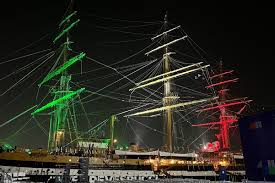 Governments today face scrutiny on their 100th day, sixth month, first year or some equally arbitrary period. Like surprise examinations in a school, they end up being haphazard exercises in assessing the true worth of the examinee. For one thing, they are completely subjective. You can choose your metric the Sensex being up or down, inflation, FDI coming in and so on, and shape the argument any way you want. In other words, show the glass as being completely full, half empty, half full, or completely empty. The real test, however, are elections the small ones in state assemblies and the big one to the Lok Sabha. The Narendra Modi government faces a small test later this year when elections will take place to the Bihar Legislative Assembly and later, in 2016 in West Bengal and in 2017 in Uttar Pradesh. However, since the BJP is not the incumbent party in any of the states, its stakes are relatively low. But, at the end of the day, the real test will take place only in May 2019.
Governments today face scrutiny on their 100th day, sixth month, first year or some equally arbitrary period. Like surprise examinations in a school, they end up being haphazard exercises in assessing the true worth of the examinee. For one thing, they are completely subjective. You can choose your metric the Sensex being up or down, inflation, FDI coming in and so on, and shape the argument any way you want. In other words, show the glass as being completely full, half empty, half full, or completely empty. The real test, however, are elections the small ones in state assemblies and the big one to the Lok Sabha. The Narendra Modi government faces a small test later this year when elections will take place to the Bihar Legislative Assembly and later, in 2016 in West Bengal and in 2017 in Uttar Pradesh. However, since the BJP is not the incumbent party in any of the states, its stakes are relatively low. But, at the end of the day, the real test will take place only in May 2019.
Judged by that measure, the Modi government does have time. The problem, however, is that as of now, we are not quite clear as to the direction it is moving in. The first year should have given us a clear indication of its plans, and the personnel who would execute them. However, we have clarity in neither area. Yes, we are familiar with the numerous slogans and buzzwords — “Make in India”, “Swachh Bharat Abhiyan,” “Namami Ganga”, “Jan Dhan Yojna”, “Shramev Jayate” or “GIAN, Global Initiative of Academic Networks”. But we see no clear policy lines or the organisations which will deliver them. We know that Arun Jaitley is the effective number two in the ministry, and that the Minister for Water Resources Uma Bharti is the nominal head of the clean Ganga campaign, or that Nitin Gadkari handles road building and Venkaiah Naidu does urban development. But none of these figures have stood out so far, as did Jaswant Singh, Arun Shourie, BC Khanduri and Yashwant Sinha in the case of the first NDA.
The challenge before the second National Democratic Alliance government is much more complex than that faced by the first, headed by Atal Bihari Vajpayee. In the last fifteen years, the governmental system has become more stove-piped and clogged.
So, the challenge before the government is not merely to run the system, but to understand that to even to run the government effectively today, there is need to first restructure and reform it. This is where we find little happening, because the Prime Minister in his wisdom has marginalised his political colleagues and privileged the bureaucracy.
However, the bureaucracy is simply unable to cope with the level of expertise required to run the government of today since it lacks an effective system of promoting expertise and upgrading the skills of its own personnel. In a bid to retain control, it has layered the government system with regulations and procedures which have effectively paralysed decision-making.
So, unless this reform takes place, we are likely to see a lot of declarations, slogans and plans, but little happening on the ground.
To break this logjam, Prime Minister Modi needs to, perhaps, imitate Rahul Gandhi and take a break to meditate on his situation. He needs to realise that the people of the country gave him the kind of electoral majority he got, on the basis of his promise of radical reform. It is true that the Modi team has ended the drift of the UPA II era, but in the main through tinkering with the system, rather than overhauling it. Achievements like coal blocks allocation have been more an outcome of a court-driven process than a self-conscious effort to reform. Indeed, within the government there seems to be a belief as expressed in the Economic Survey 2014-2015 that “creative incrementalism” will give India sustainable double-digit growth, rather than radical reforms.
India may have overtaken China in terms of economic growth, but that is scarcely any comfort since almost all estimates say that it would take us a generation or two to overtake the Chinese, even with double-digit growth. But that is assuming we can manage to consistently grow at a high rate for the next two decades and more.
This is where the problem lies. There is likely to be no gain without pain. It is an illusion to think that India can achieve its economic promise without drastic changes in the way it runs its governmental system. Though it is true, Modi recognises this, that the challenge is not just something New Delhi alone can meet; now more than ever, there is need for a functioning partnership between the Union government and the states. The move for a GST is one small forward move. But we need sharp acceleration of that partnership in removing obstacles in inter-state commerce and transportation. Likewise, beyond the promise of Make in India, the Centre and the states need to focus on the immediate problem that the country confronts — rural distress which can only be removed through reforms in our agricultural system.
The one lesson that emerges from the experience of other societies in transition is that we need to see reform as a continuous process. There is also need to understand that in a democracy, the process of reform can only be led by the political class. If there is one weakness that the government clearly has, is the lack of Ministers who are reform minded. It is true that Modi is committed to reform and change. But that is not sufficient, no matter what his supporters may think, he is not a superman. He needs to expand his political team and empower them.
Author Profile
- India Writes Network (www.indiawrites.org) is an emerging think tank and a media-publishing company focused on international affairs & the India Story. Centre for Global India Insights is the research arm of India Writes Network. To subscribe to India and the World, write to editor@indiawrites.org. A venture of TGII Media Private Limited, a leading media, publishing and consultancy company, IWN has carved a niche for balanced and exhaustive reporting and analysis of international affairs. Eminent personalities, politicians, diplomats, authors, strategy gurus and news-makers have contributed to India Writes Network, as also “India and the World,” a magazine focused on global affairs.
Latest entries
 DiplomacyOctober 4, 2025UNGA Resolution 2758 Must Not Be Distorted, One-China Principle Brooks No Challenge
DiplomacyOctober 4, 2025UNGA Resolution 2758 Must Not Be Distorted, One-China Principle Brooks No Challenge India and the WorldJuly 26, 2025MPs, diplomats laud Operation Sindoor, call for national unity to combat Pakistan-sponsored terror
India and the WorldJuly 26, 2025MPs, diplomats laud Operation Sindoor, call for national unity to combat Pakistan-sponsored terror India and the WorldJuly 25, 2025When Fire Ends, Diplomacy Begins
India and the WorldJuly 25, 2025When Fire Ends, Diplomacy Begins India and the WorldJuly 16, 2025Operation Sindoor and its Aftermath: India’s Successful Diplomatic Outreach
India and the WorldJuly 16, 2025Operation Sindoor and its Aftermath: India’s Successful Diplomatic Outreach







